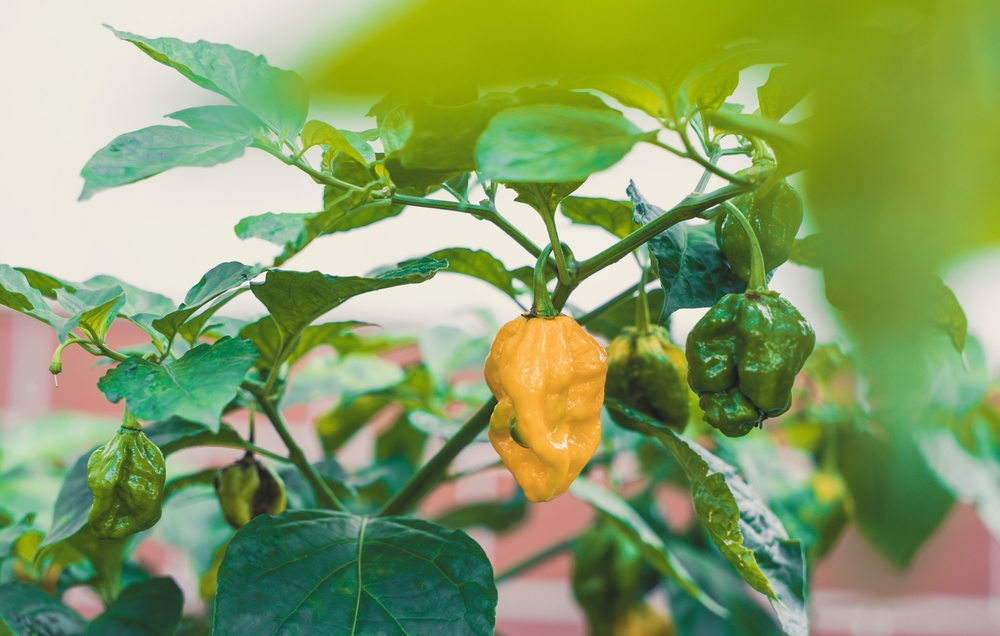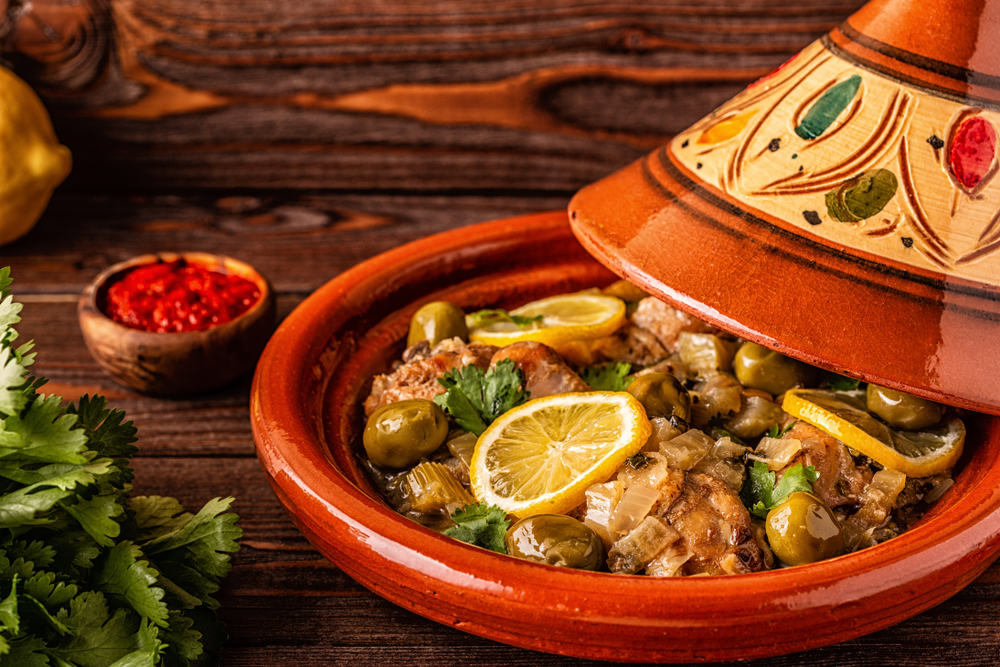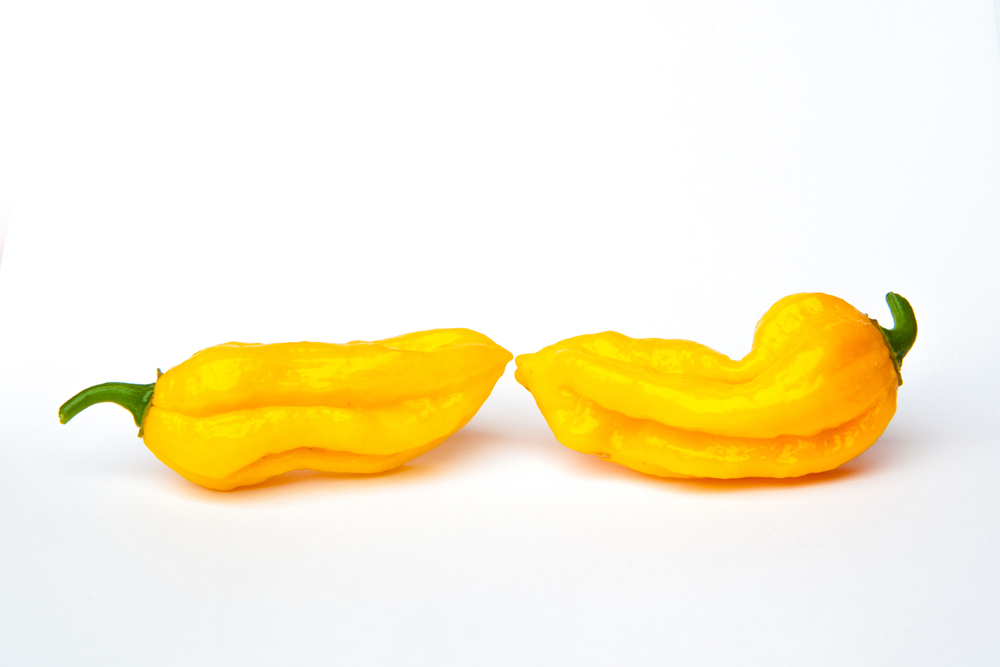Fatalii peppers are hot, citrus-flavored Central and Southern Africa heirloom peppers grown for their heat, citrus flavor, and drought resistance. They are close relatives of habaneros and have a similar heat and flavor profile.
What Are fatalii Peppers?
Fatalii peppers of the Capsicum chinense species are an African heirloom pepper variety developed in Southern and Central Africa by Africans from hot peppers brought to these regions from the Americas in the 15th or 16th century.
These hot chili peppers are believed to have been derived from habanero peppers, their close relatives. They are also believed to be early relatives of bhut jolokia (ghost peppers), one of the world’s hottest peppers.
The peppers are similar in heat, shape, and flavor to typical habaneros. They look like an elongated habanero hot pepper.
Fatalii peppers have since become native to Central and Southern Africa as a heritage variety passed down from families and chile pepper enthusiasts.
You can identify fatalii hot peppers by the following attributes.
Color
If you have seen a fatalii pepper before, you’ve probably seen the yellow fatalii, the most prevalent variety of the pepper globally. It ripens from pale green to bright yellow or citrus yellow.
Fatalii peppers are also available in other colors, such as white, red, and chocolate at full maturity.
Size And Shape
Fatalii peppers grow to about three inches long and 0.75-1.5 inches wide at full maturity. The small peppers have a straight or curved conical shape that tapers to a pointed end away from the stem.
Texture
The skin of fatalii peppers is deeply creased and has a combination of deep dents or grooves/ridges running down the length of the pepper. It looks like a folded pepper with a waxy, fairly wrinkled look about it.
The flesh beneath the skin is thin, crisp, and yellow.

What Does The fatalii Pepper Taste Like?
Fatalii peppers have an earthy, sweet, fruity and citrus flavor with bright hints of lime and lemon.
White fatalii peppers taste much like the standard yellow fataliis but have a stronger citrusy flavor.
Red fatalii peppers are sweeter and tangier than the yellow variety, while chocolate fatalii peppers have a slightly stronger acidic flavor than the yellow ones.
How Spicy Is A fatalii Pepper?
Although most people fear that “fatalii” comes from “fatal,” these peppers are perfectly safe for human consumption and can’t kill you with their spiciness.
Fatalii peppers score 125,000-325,000 Scoville Heat Units and are in the same heat range as their close relatives, habaneros and scotch bonnet peppers, which register 100,000-350,000 SHUs.
The heat level of fatalii peppers is also commonly registered as 125,000-400,000 SHUs. This development could be possible, considering red fatalii peppers are hotter than the standard yellow version. Fataliis grown under drought conditions are also hotter.
For a better perspective, the least spicy fatalii is 25 times more pungent than the least hot jalapeno at 2,500 SHUs. The spiciest fatalii is 40 times hotter than the hottest jalapeno pepper at 8,000 SHUs.
Even though they are in the world’s hottest peppers category, fatalii peppers are nowhere near super hot chilis like the Carolina reaper, bhut jolokia (ghost pepper), and Trinidad Moruga scorpion pepper.
What Can You Do With fatalii Peppers?
The extreme heat, thin skin, and deep citrusy flavor of fatalii chilis make them versatile in both cooked and raw use cases. You can use the peppers in the following ways:
- To make fatalii hot sauce.
- To flavor other hot sauces.
- Cook by boiling, roasting, or stir-frying.
- Dry and grind them into fatalii chili powder, a versatile spice for making soups or meat rubs.
- Blend with fruits to make pepper jam and jelly.
- Dry and use to spice dressings, grilled meats, marinades, tequila, mescal, barbecue sauces, beer, and seafood.
- Prepare pickled fatalii yellow peppers.
- Cook and puree into a hot liquid sauce.
- Cook into vegetables, curries, meats, soups, and stews.
- Chop them fresh and raw into marinades, chutney, dips, salsas, and salads.
- Use in traditional African dishes like tajines.

Where To Buy fatalii Peppers
Fatalii peppers aren’t common in grocery stores. You might find some at local farmers’ markets and select specialty stores in season. Fatalii hot sauces and seeds are available online from Amazon and other online retailers.
Can You Grow fatalii Peppers?
Like other heirloom pepper varieties like Espellete and guindilla peppers that aren’t common outside their native region, you’ll have better chances growing your own fatalii peppers.
Fatalii pepper seeds are available in online seed catalogs. You can also find them from specialty growers in Australia, Africa, the US, and Europe.
The sun-loving peppers do well in greenhouses and pot gardens. They are partially resistant to drought and get even hotter if they grow under drought conditions.
Start your fatalii pepper seeds indoors 6-8 weeks before the last frost. Germination will take 7-14 days, but it can be up to 21 days if the conditions aren’t perfect.
Transplant the young pepper plants outdoors in warm, moist soil when they have grown six true leaves. Use a plant spacing of 12-24 inches. Transplanting should happen 1-2 weeks after the last frost.
Your peppers will be ready for harvesting in 80-100 days after transplanting.
Substitutes For fatalii Peppers
Close relatives like regular habaneros, chocolate habaneros, scotch bonnet peppers, and red savina habaneros make excellent fatalii pepper substitutes. You’ll be trying to achieve the same or a relative heat level and a similarly sweet, fruity flavor.
Regular habaneros and scotch bonnet peppers both have 100,000-350,000 Scoville units.
Chocolate habaneros, Caribbean red habaneros, and red savina habaneros are hotter at 425,000-577,000 SHUs, 300,000-500,000 SHUs, and 350,000-577,000 SHUs, respectively.
You can also try the Roatan pumpkin habanero, which registers 100,00-500,000 Scoville Heat Units.

